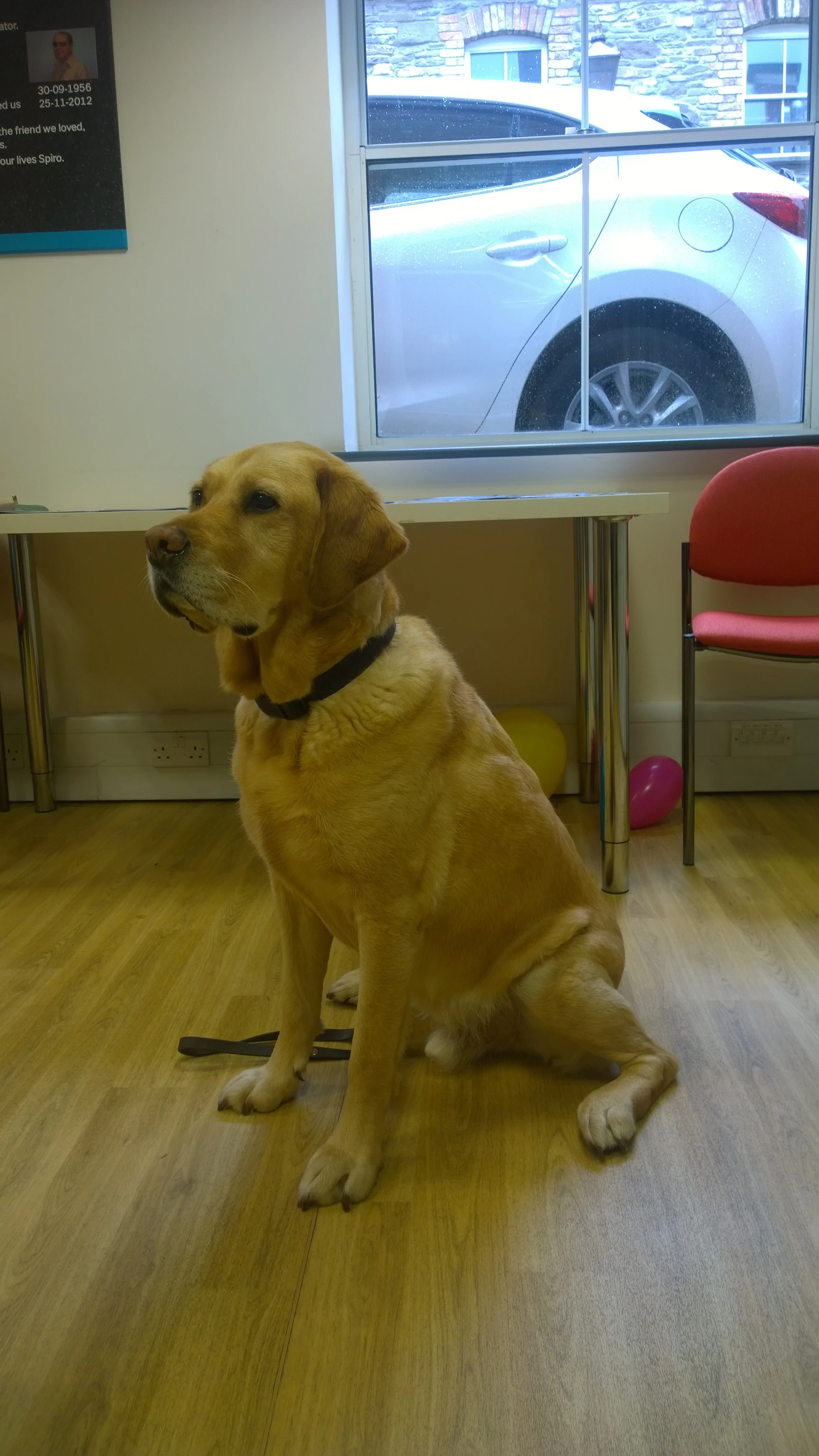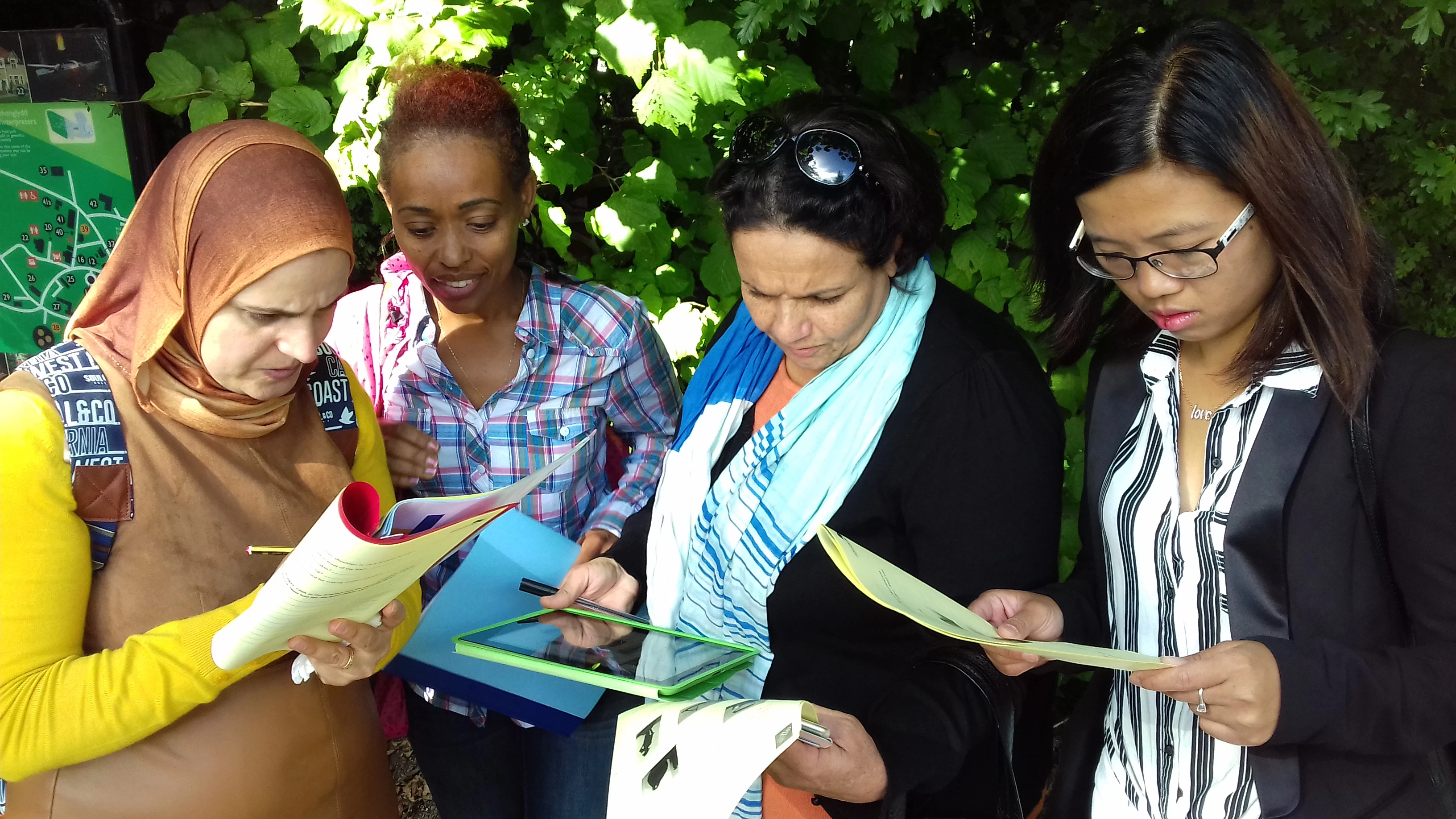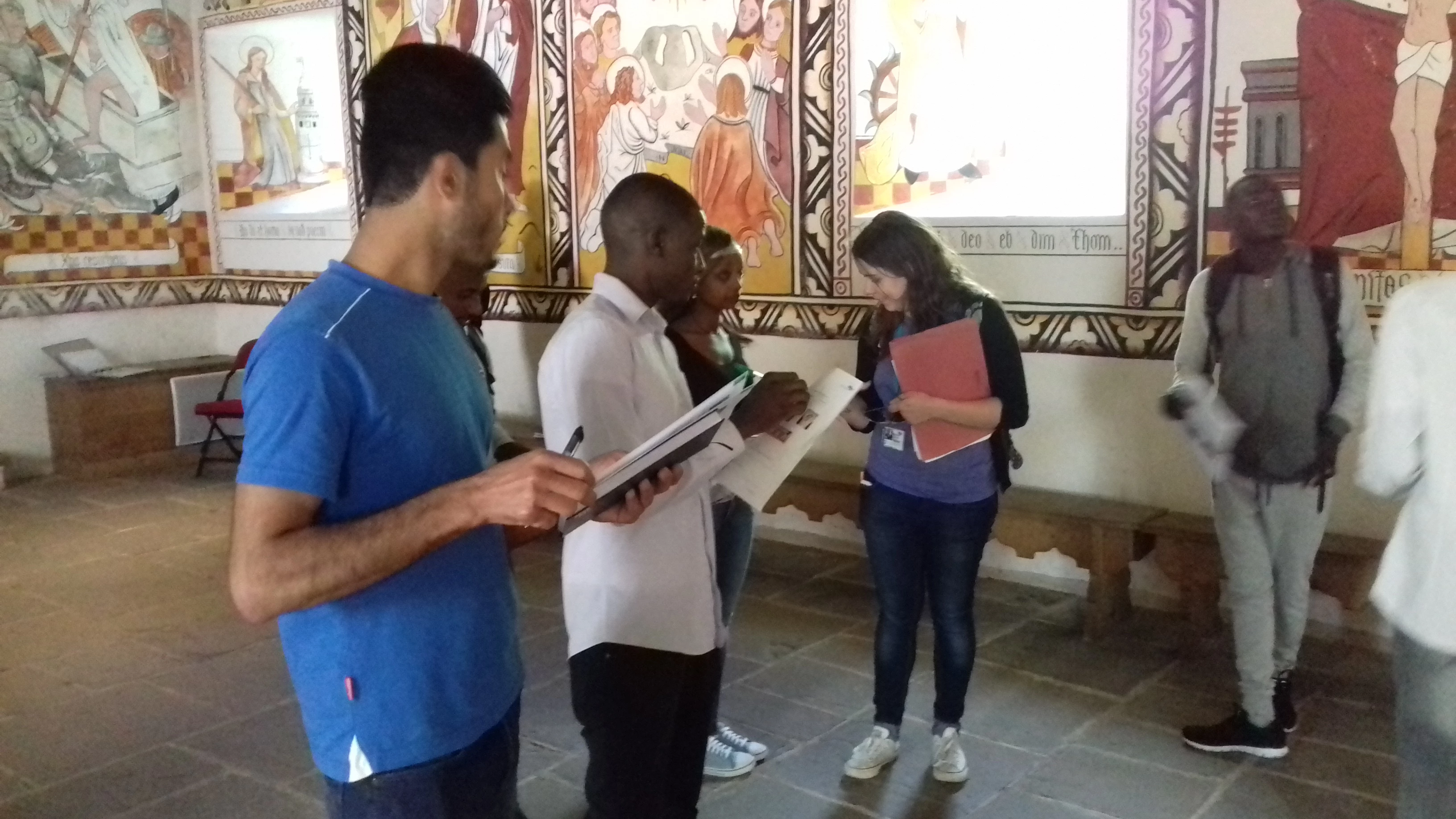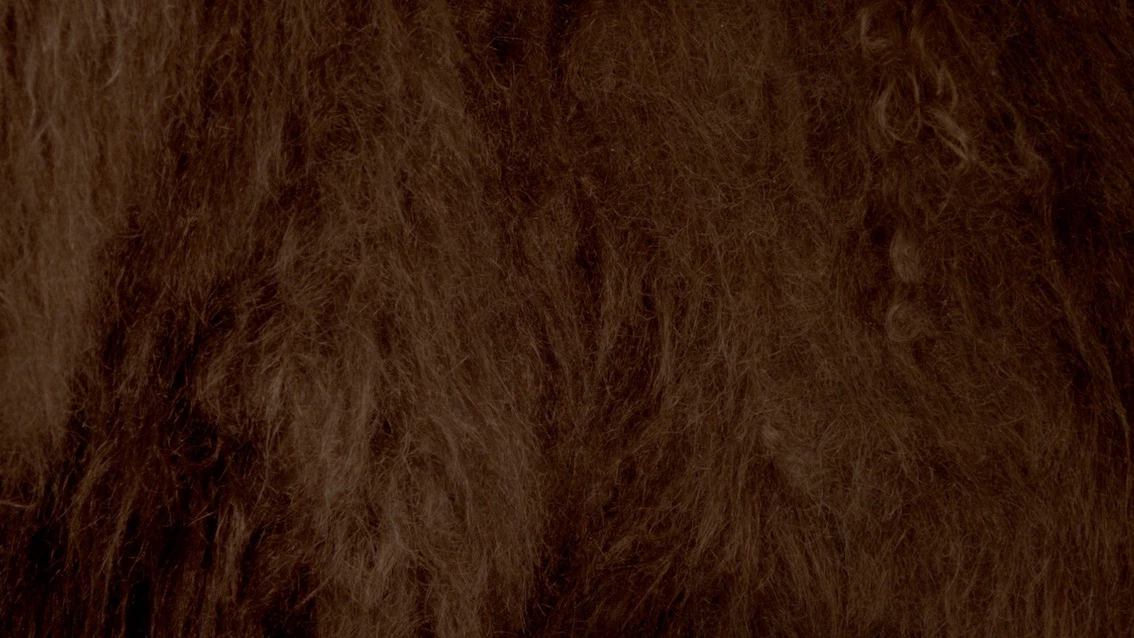Arnie Guide Dog's Museum adventure
, 26 Medi 2016
My name is Arnie. I am an eight and a half year old Labrador retriever cross and I am a dog with a job. I am a guide to my human, the one called ‘Mum’.
We have been partners for seven years and she has very poor vision. Although she can see colour and shape, she has no depth vision and lives in a blurry world. My role is to keep her safe, stopping her from bumping into things and causing chaos.
This has been particularly important on our trips to one of our favourite places, National Museum Cardiff. Mum loves art and history, and we have been invited to help develop their audio tours for visually impaired people like Mum.
My role during these tours hasn’t just been to keep Mum safe but also to protect the priceless antiquities, beautiful paintings and fragile exhibits from the accident-prone one!
During these audio tours the museum guides describe in detail, to visually impaired visitors, their surroundings and interesting objects around them.
They also had sighted guides to help guide visually impaired people round the museum safely. Sighted guides are humans that do what I do: indicate steps, avoid objects and keep the visually impaired person safe. I think this makes a lot of sense because if they are anything like Mum they may need a little supervising.
One of the tours took us through the Evolution of Wales galleries. Our guide explained that each time the floor surface changed, it represented a movement forward in time in the story of the Earth. I took my time and stopped and tapped Mum's knee with my nose, so she knew to lift her feet and be aware of the changes in the surfaces.
I worked hard to ignore the giant bones, hanging in shapes of strange creatures, all over the place. I am sure they would have been very tasty, but I was in harness and at work!
The only part I was greatly concerned by was the terrible giant hairy creature that made a noise and moved, I tried to walk straight past and guide Mum safely out, but everyone stopped and stood to listen to one of the human guides talk about woolly mammoths and changing landscapes….? I had my eye firmly fixed on a quick exit!
Arnie Guide Dog
PS If other Guide Dogs want to take their owners on a pawsome Museum adventure, you can book a place on their audio description tours by phoning (029) 2057 3240. Woofing great!









